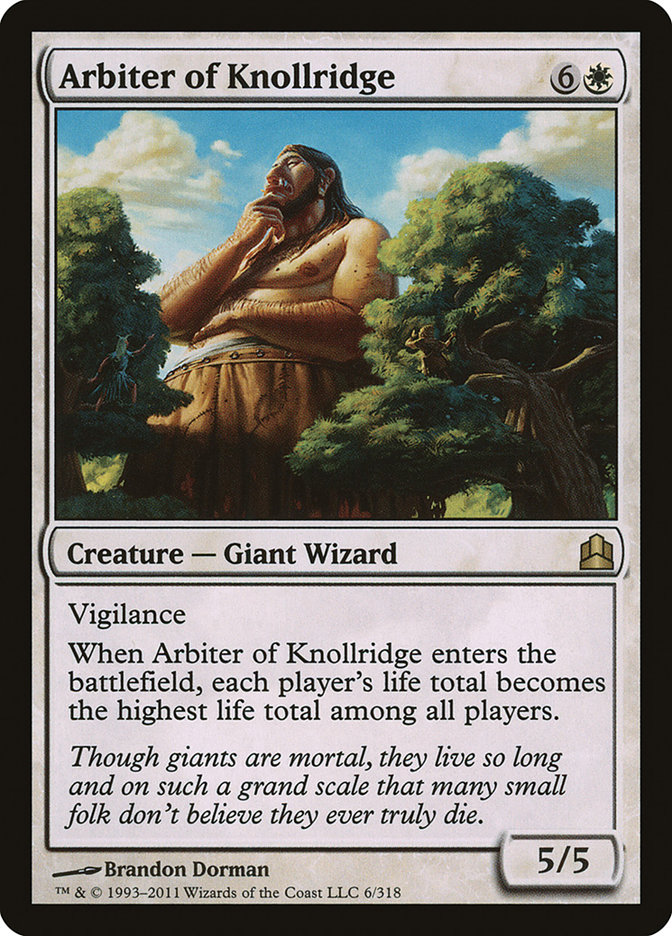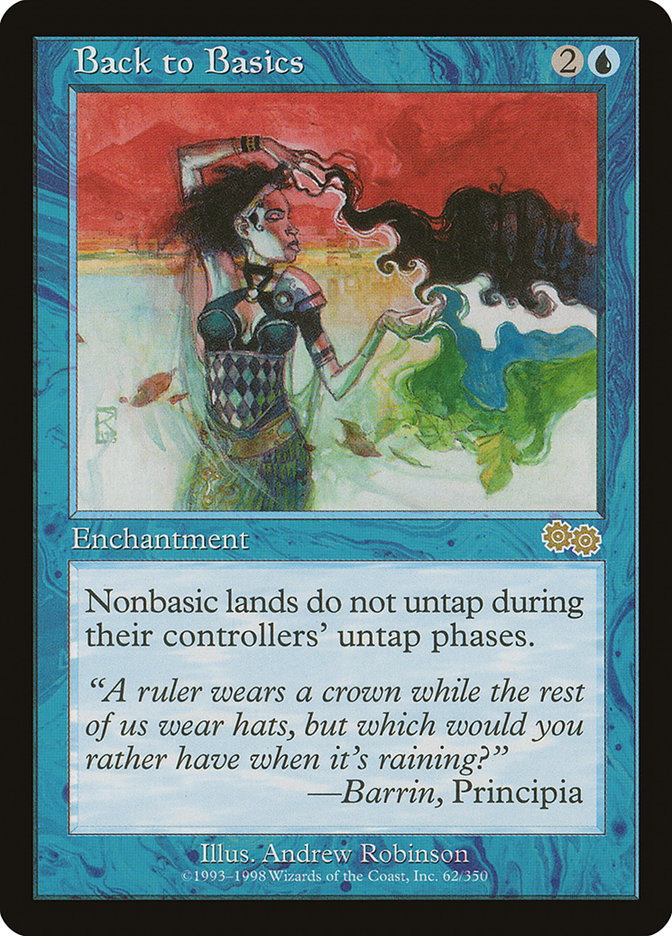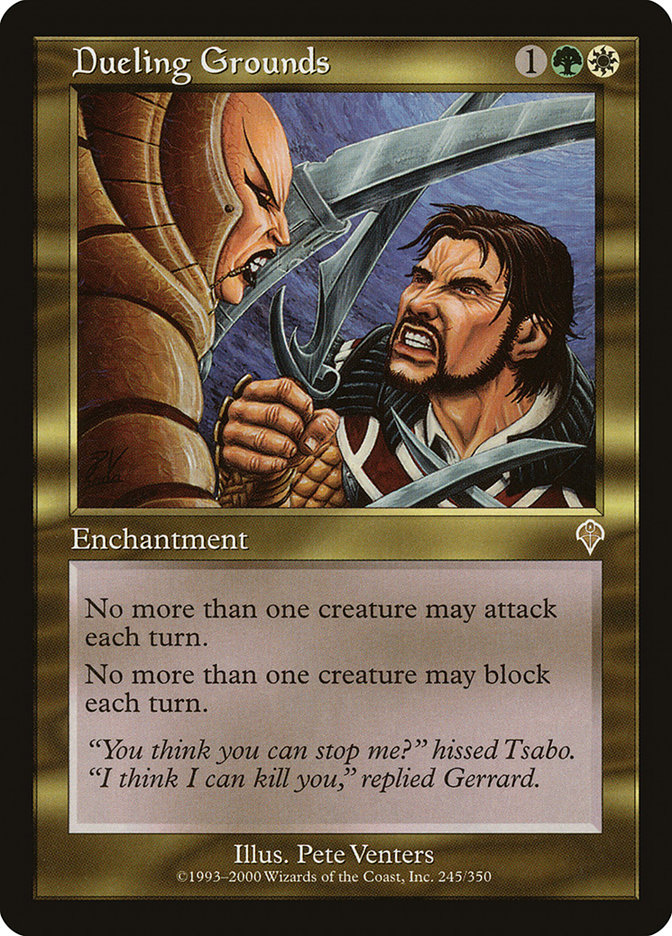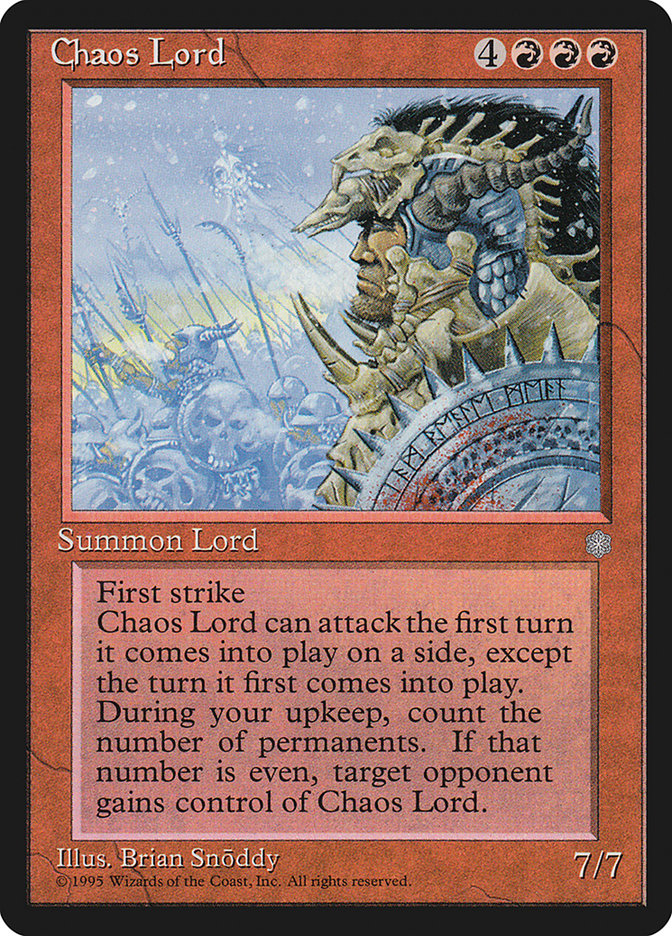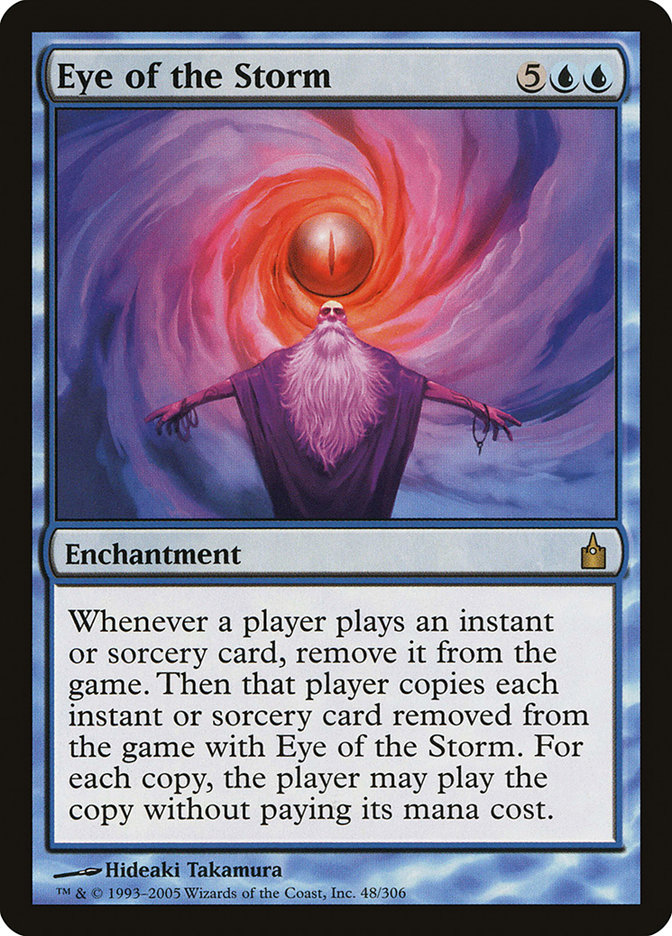I get the question all the time: “What’s the best card in the format? Consecrated Sphinx? Prophet of Kruphix? Deadeye Navigator?” This is generally
followed up with “that should be banned,” but banning is not the focus of what I want to talk about today. I want to talk about cards worth encouraging
people to play them. This isn’t about the best cards in the format, but the best cards for the format-those which help create the games
we want to remember, not those we’ll try to forget.
When we normally evaluate cards, we talk about their power or toxicity. There’s the ever-fleeting, never-defined idea of “power level.” We understand a
good deal about cards which win games or create oppressive gamestates; we rarely talk about cards that create fun. Of course, we have to be careful with
the idea of fun, since it means different things to different people. I’m not going to assert that there is a single, approved way to have a good time. I
will suggest that from the perspective of the format’s vision, the best way to have a good time is to make sure that everyone is having a good time as
well. That doesn’t mean that everyone must have any equally good time, and I’m okay with you having a better time than everyone else, just making a
reasonable effort to ensure that no one has a terrible time (which isn’t always achievable, but it’s a laudable goal). That doesn’t necessarily mean
playing group hug cards-group hug decks can be horribly oppressive when they overload everyone with mana and cards, only caring about making one lucky
person win faster. While there are some chaos cards on the list, the chaos idea is also one that can get out of hand. This list is a tricky balance of
cards that will help you and everyone else enjoy the game and maybe give you an edge at winning.
You’ll note as we go along that I consider good for the format cards which discourage people from doing broken things (either immediately or in future
games you play together). When we’re looking at the format, we can’t look at just any single game; we must look at the metagame. The list is eclectic,
since it comes at the argument from a number of different angles. It isn’t intended to be comprehensive or exhaustive, but instead representative. I
haven’t tried to rank the cards; they’re listed alphabetically for your convenience. You’ll notice the common thread of changing how players think about
the game, especially in dealing with the stuff that players commonly do, take advantage of, or outright abuse.
Angelic Arbiter: I’ve said “dammit!” about this card more than any other in Magic. You can’t just cast spells and battle. Now you have to decide which of
the two is more important. You can combine it with cards like Angel’s Trumpet to make decisions even trickier.
Arbiter of Knollridge: I like longer games. I’ve played a number of epic ones in which someone’s life total gets seriously out of hand. What’s more fun
than everyone’s being crazy? Some folks won’t like this because it may lead to never-ending games, but I’m a fan of the challenge of being forced to kill
someone with commander damage from Adun Oakenshield or trying to mill them using a non-mill deck.
Aven Mindcensor: One of the wonderfully blow-outy cards in the format, it slows down tutors and ramp, still giving them a little bit of a chance to hit
something-it’s always exciting when they do. It would be better (as would Stranglehold) if it were all players, but unlike Mindlock Orb, which is also on
the list, its ability to flash in is what gets it here.
Back to Basics: You might think this is contrary to my idea of not taking away the game from the other players; I would disagree. It’s only taking the game
away from the super-greedy ones, and that’s okay. If you have a reasonable number of basic lands, this won’t hurt that badly. Unlike Ruination, it doesn’t
destroy them, just makes you have to think about using them.
Burnished Hart: In order to be on equal footing with green decks, other colors need some ramp help. Burnished Hart has gone a long way toward leveling the
playing field in that regard. We want to maintain the color pie (we certainly don’t want a 1R Rampant Growth variant), but bringing it closer to balance is
fine.
Comeuppance: This card is good because of its long-term effects on games you play. It, along with others like it, will make players twitchy about attacking
you with a giant army. Play it once and it will pay many dividends down the road.
Confusion in the Ranks: One of the few chaos cards that I really like, it of course gets out of hand when multiple things enter the battlefield
simultaneously. Still, because it’s there, players have to reconsider what they’re doing instead of just blindly dumping stuff out of their hands.
Council’s Judgment: I love the will of the council mechanic, and this is one of the thinkier cards that have it. The last player has a great deal of power
since they can vote for something which has already been voted for, breaking a tie, so if you’re not the last player, you have to give it some serious
thought.
Dueling Grounds: I am a fan of attacking with piles of creatures. Dueling Grounds brings things back into reasonableness, especially in the world that
contains Craterhoof Behemoth. Attacks must be more well thought-out and serve a greater purpose.
Fog: This is all about not just Fog, but the variants, such as Tangle, Respite, and Spore Cloud. Fogs provide a little assurance that a single, explosive
turn can’t kill you. Until they’re playing Flaring Pain. Then you’re screwed.
Grafdigger’s Cage: It’s a pretty simple can’t, but it shuts down some of the more broken setups in the format. I’m not suggesting I’d prefer the format
with a permanent Grafdigger’s Cage (or Torpor Orb or Mindlock Orb), I’m suggesting that inserting such a significantly course-changing card into some games
makes them more interesting.
Homeward Path: People don’t like their stuff getting stolen. Homeward Path keeps them from getting salty about it. It’s also one of those on-board tricks
that people will forget about and then get wrecked by. Always fun.
Horobi, Death’s Wail: Horobi wouldn’t be on the list if it had hexproof. Its ability to change how abilities are used-and the fact that it carries its own
vulnerability-disrupts thinking patterns. How often do you get to kill a creature with Sea Kings’ Blessing?
Hushwing Gryff: Regardless of the time at which this Torpor Orb on a stick gets played, it always gets a roar from the table. I know that I’m over-reliant
on creatures to do my work, and I still love seeing this card come out.
Karn, Silver Golem: Not so much in a dedicated artifact deck, but Karn in a “normal” deck tends to do cool stuff. Sure, it can be strategically
advantageous to get rid of some troubling artifacts when someone casts Wrath of God, but I’m more of a fan of seeing Spine of Ish Sah getting into the red
zone.
Magister of Worth: Wrath or resurrection? The council gets to decide. Sometimes the choice is clear, like when one player has an overwhelming advantage on
the battlefield, but what do you do when a different player has that same kind of advantage in the graveyard? Tricky choices are tricky.
Mindlock Orb: Again, I’m not advocating for permanent Mindlock Orbs in the format, just occasionally changing the math. Since I don’t play loads of tutors
anyway (although I suppose I ramp just as much as the next person), it doesn’t hurt me as badly. It certainly prevents tutoring for brokenness (but it also
prevents responsible tutoring for answers-although that happens far less). I especially like Mindlock Orb’s little cousin, Shadow of Doubt.
Mirror Strike: Another card in the Comeuppance family, killing someone just once with their own Blightsteel Colossus is enough to cause them significant
doubt about attacking you with one big, fat, lethal thing. Just be careful. If you’re not a particularly good bluffer and don’t have the card in hand,
avoid convincing someone that they don’t have the grapes to attack you.
Parallectric Feedback: It’s probably not going to stop people from trying to Exsanguinate for 50, but it’s going to feel pretty good when you kill them
because of it. Being able to do broken stuff is one of the cool draws to the format. Being able to do it with no potential blowback is unhealthy.
Perplexing Chimera: People keep doubting me when I bring up this card. Then they play it and realize how it changes every element of their thinking and
creates unusual and interesting gamestates. I would consider putting it in every blue deck ever just for the absurdity factor.
Phelddagrif: It’s not just about the ability to give stuff to other players, it’s about the ability to change the math of the game. You can save someone by
giving them life, a token to block with, or draw a card that might get you all out of a difficult situation. I love the permutations of possibility the
card creates.
Portcullis: A card which absolutely changes the tenor of a game, it will lead to some wild situations, especially when people keep piling up creatures on
the other side of the gate. It might lead to one of those times when you have a jillion triggers on the stack, but those are some of the most amusing
moments the format creates.
Possibility Storm: I was tempted to list this card number one, because it’s what made me think about this whole piece. It brings a significant element of
luck to the game, which is occasionally fine. Every now and again, I’ve seen one player just get major hit after major hit, but most of the time, it’s
sufficiently wild and wacky. When the choice is good play or Possibility Storm, it’s Possibility Storm all the way.
Rule of Law: This obviously goes for its friends like Eidolon of Rhetoric and Arcane Laboratory. Like with Angelic Arbiter, sometimes you have to make
difficult choices. It’s a super bonus that it shuts down combo decks.
Split Decision: Another will of the council card that forces players to think. It can be an emergency counterspell of a counterspell, or throwing someone’s
Cyclonic Rift back at them. Or even better, stealing their extra turns.
Torpor Orb: I’ve referenced it enough already that I probably don’t need to say much more about it. Once again, I’d hate for it to be on the battlefield
all the time in every game, but I certainly enjoy the challenge of playing around it.
Volcanic Offering: Mechanically, I like all the Offerings. This came onto the list because I considered putting Wasteland on-some of the most broken stuff
in the format happens due to nonbasic lands. Wasteland only takes care of one at a time. With Volcanic Offering, you can team up with someone to take out
both Cabal Coffers and Urborg, Tomb of Yawgmoth while dealing with some problematic creatures at the same time.
I did a little crowdsourcing on Facebook to see what cards other folks would put on this list. Here’s a sampling:
Chaos Lord: “[it’s] old, big, shares well with a friend, and requires that noobs read the card a couple times.” I must be a noob, because I had to read it
more than once.
Gaddock Teeg: “I love to watch the world burn.” I’m not sure how much world-burning is going on, but I can get on board with sometimes keeping things to
creatures and small spells.
Hive Mind or Eye of the Storm “in a casual setting.” I agree with that one. So long as Pacts or Windfall variants aren’t part of the math, they can be very
interesting cards. Eye of the Storm can get kind of wild when there are loads of spells exiled with it, becoming the games that you’d love to write
down-and there’s no way in hell you want to write them down.
Scrambleverse: This one also cropped up a few times. “It’s a game on its own when you cast [it]. My next time casting it I will be giving people points so
they can bid on face-down random cards.” Grip of Chaos also came up, which certainly goes into the “changing the math” category.
Stormtide Leviathan: “is a bro.” No disagreement.
Supreme Verdict: A surprisingly interesting answer which occurred multiple times, with the same basic sentiment: “Sometimes resetting the board is simply
what’s needed to move the game on.”
Once again, this list is not intended to be anywhere near complete. I want to give you an idea of cards which are representative of developing interesting,
outside-the-box games, the ones which we recall years down the road. They make radical changes to the battlefield environment and the way players approach
the game. I’m all for “normal” games most of the time, but introducing elements which modify the way the game is played, or the way players think about
playing creates those epic, memorable games which bring us all to the format.
This week’s Deck Without Comment is Lavinia Blinks.
Creatures (33)
- 1 Solemn Simulacrum
- 1 Clone
- 1 Man-o'-War
- 1 Duplicant
- 1 Karmic Guide
- 1 Crusading Knight
- 1 Venser, Shaper Savant
- 1 Galepowder Mage
- 1 Reveillark
- 1 Slithermuse
- 1 Knight of the White Orchid
- 1 Frost Titan
- 1 Sun Titan
- 1 War Priest of Thune
- 1 Elesh Norn, Grand Cenobite
- 1 Phyrexian Metamorph
- 1 Phyrexian Ingester
- 1 Sphinx of Uthuun
- 1 Restoration Angel
- 1 Deadeye Navigator
- 1 Isperia, Supreme Judge
- 1 Angel of Finality
- 1 Ephara, God of the Polis
- 1 Brago, King Eternal
- 1 Resolute Archangel
- 1 Oreskos Explorer
- 1 Reflector Mage
- 1 Eldrazi Displacer
- 1 Wispweaver Angel
- 1 Cloudblazer
- 1 Felidar Guardian
- 1 Vizier of Deferment
- 1 Disposal Mummy
Planeswalkers (2)
Lands (38)
Spells (26)
- 1 Sensei's Divining Top
- 1 Sol Ring
- 1 Equilibrium
- 1 Darksteel Ingot
- 1 Future Sight
- 1 Turnabout
- 1 Hibernation
- 1 Wayfarer's Bauble
- 1 Crystal Shard
- 1 Portcullis
- 1 Vanish into Memory
- 1 Return to Dust
- 1 Cryptic Command
- 1 Planar Cleansing
- 1 Day of Judgment
- 1 Blue Sun's Zenith
- 1 Ghostly Flicker
- 1 Conjurer's Closet
- 1 Faith's Reward
- 1 Azorius Charm
- 1 Cyclonic Rift
- 1 Sphinx's Revelation
- 1 Azorius Cluestone
- 1 Restore the Peace
- 1 Strionic Resonator
- 1 Eerie Interlude

Check out our awesome Decklist Database for the latest versions of all my decks:
ADUN’S TOOLBOX;
ANIMAR’S SWARM;
AURELIA GOES TO WAR;
CHILDREN of a LESSER GOD;
DEMONS OF KAALIA;
EREBOS and the HALLS OF THE DEAD;
GLISSA, GLISSA;
HELIOD, GOD OF ENCHANTMENTS;
DREAMING OF INTET;
FORGE OF PURPHOROS;
KARN, BEATDOWN GOLEM;
HALLOWEEN WITH KARADOR;
KARRTHUS, WHO RAINS FIRE FROM THE SKY;
KRESH INTO THE RED ZONE;
LAVINIA BLINKS;
LAZAV, SHAPESHIFTING MASTERMIND;
ZOMBIES OF TRESSERHORN;
MELEK’S MOLTEN MIND GRIND;
MERIEKE’S ESPER CONTROL;
THE MILL-MEOPLASM;
MIMEOPLASM DO-OVER;
NATH of the VALUE LEAF;
NYLEA OF THE WOODLAND REALM;
OBZEDAT, GHOST KILLER;
PURPLE HIPPOS and MARO SORCERERS;
ZEGANA and a DICE BAG;
RITH’S TOKENS;
YOU DID THIS TO YOURSELF;
RURIC THAR AND HIS BEASTLY FIGHT CLUB;
THASSA, GOD OF MERFOLK;
THE ALTAR of THRAXIMUNDAR;
TROSTANI and HER ANGELS;
THE THREAT OF YASOVA;
RUHAN DO-OVER;
KARADOR DO-OVER;
KARRTHUS DO-OVER
If you’d like to follow the adventures of my Monday Night RPG group (in a campaign that’s been alive since 1987 and is just now getting started with a new saga called “The Lost Cities of Nevinor”), ask for an invitation to the Facebook group “Sheldon Menery’s Monday Night Gamers.”

